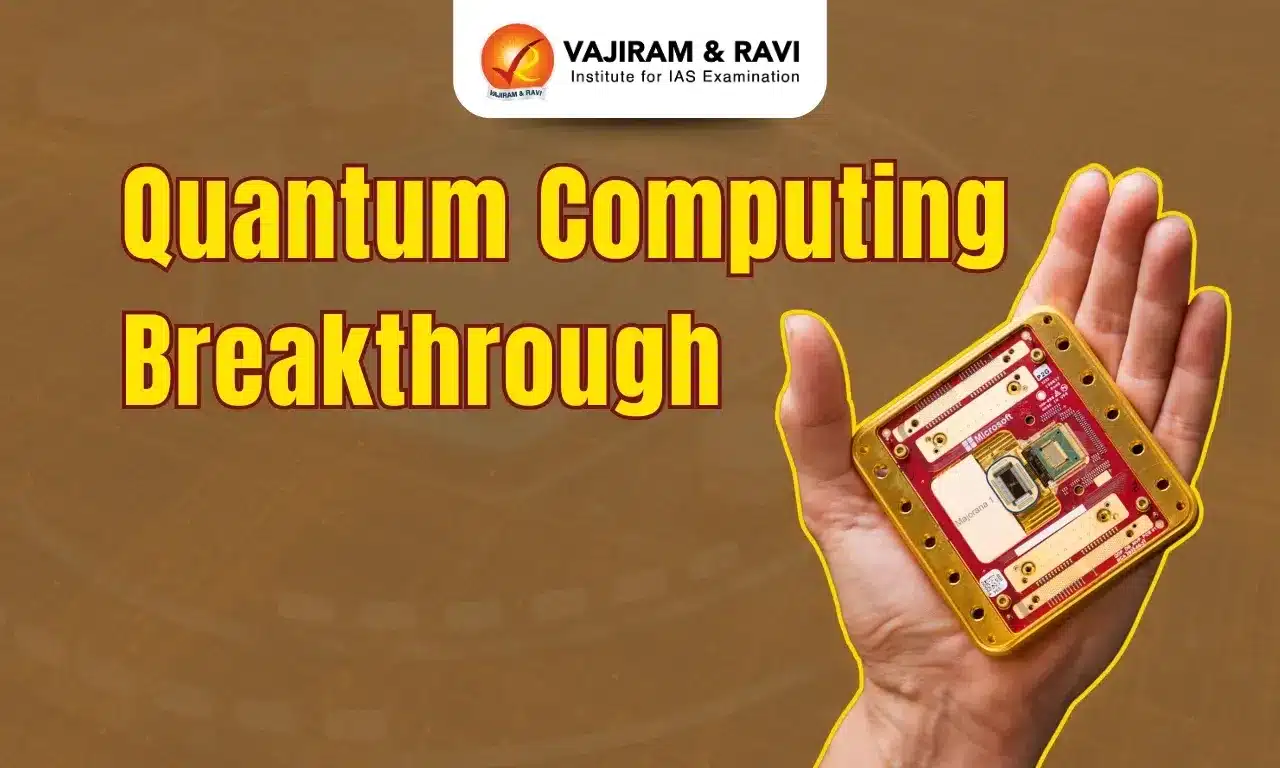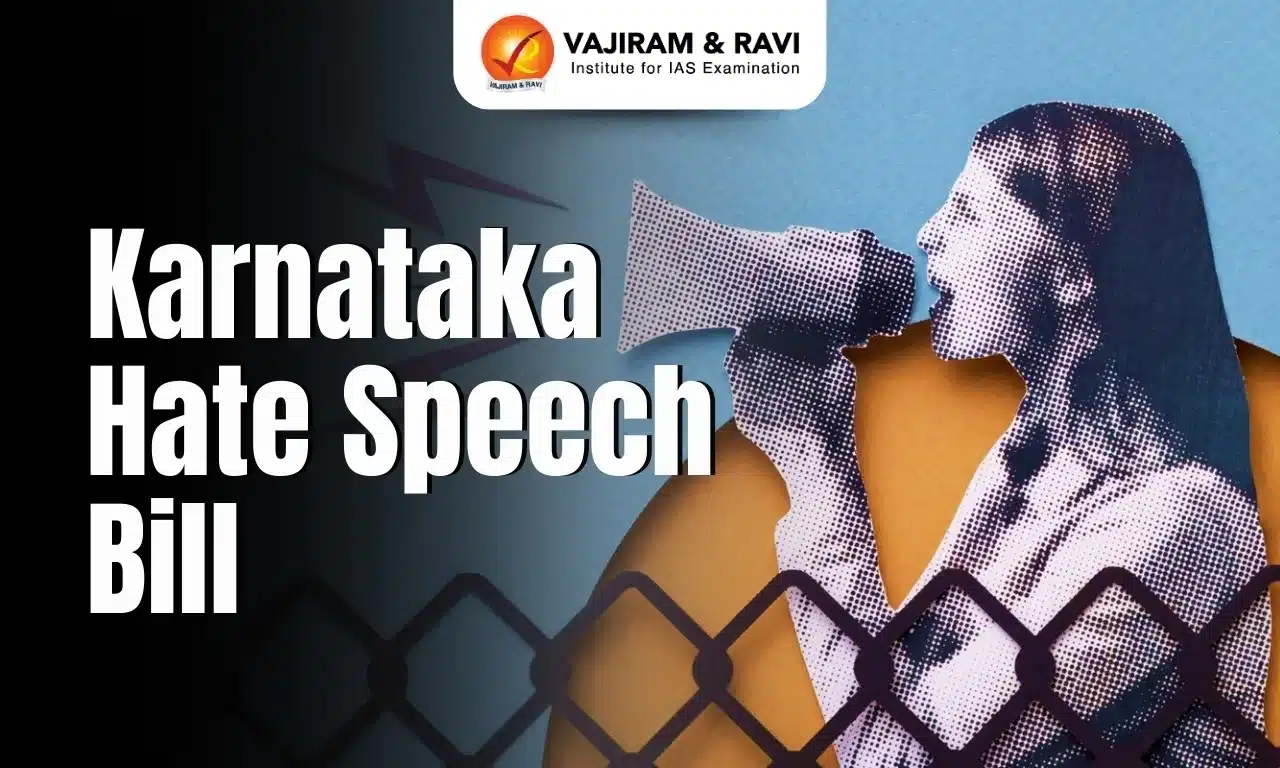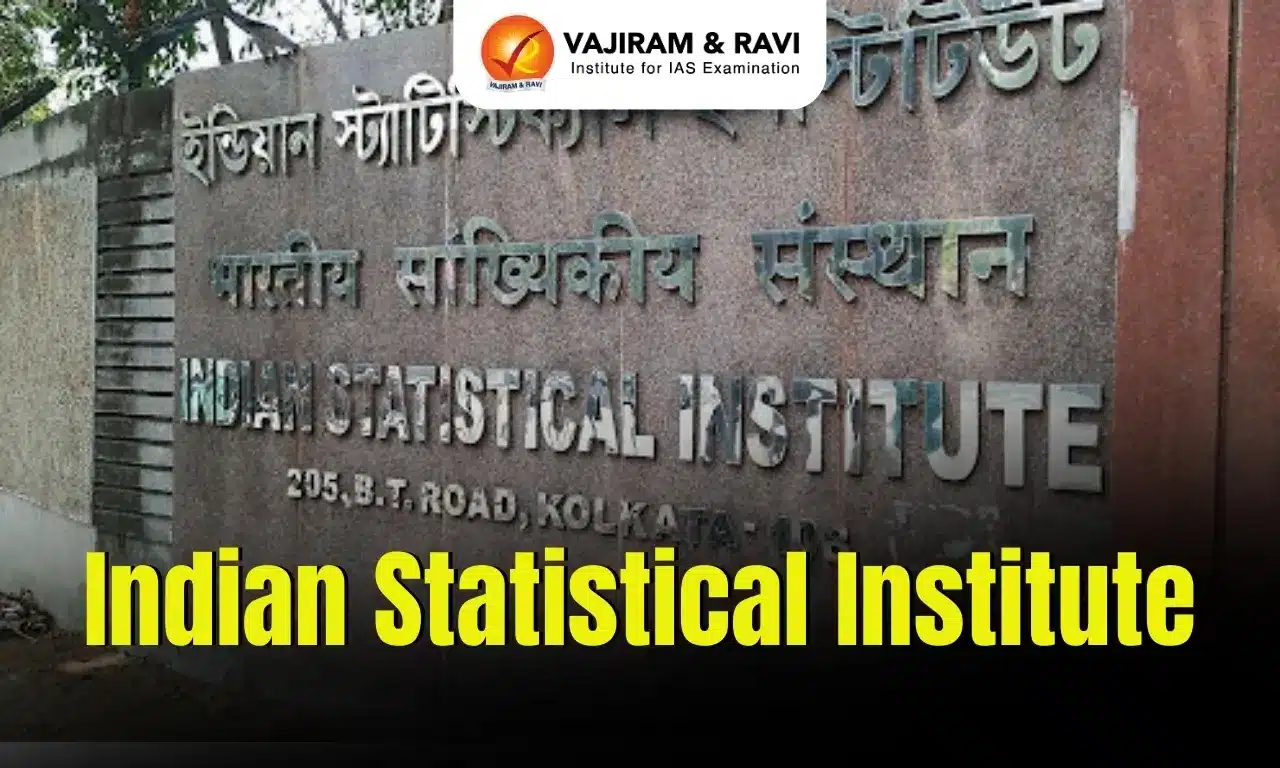What’s in Today’s Article?
- Quantum computing breakthrough Latest News
- Microsoft’s Unique Approach to Quantum Computing
- Building a New Quantum Material: Topoconductors
- Majorana 1
- Potential Applications of Quantum Computing
- Quantum Computers vs Supercomputers vs Classical Computers
- Quantum computing breakthrough FAQs
Quantum Computing Breakthrough Latest News
- Recently, Microsoft announced Majorana 1, a new quantum computing chip developed using engineered particles in a new state of matter, which the company sees as a breakthrough.
- With this Microsoft aims to develop quantum computers capable of solving industrial-scale problems within years (2027-29) rather than decades.
- Though, the company has not released any performance data on its quantum chip yet.
Microsoft’s Unique Approach to Quantum Computing
- For the past 20 years, Microsoft has focused on developing topological qubits, which are more stable and require less error correction than traditional qubits.
- Topological qubits are a more stable type of quantum bit, the basic unit of quantum computers.
- They store information in the way specially engineered particles called anyons are arranged and braided, not in the particles themselves, making them less prone to errors.
- Anyons are two-dimensional systems. They are neither fermions nor bosons, but have statistical properties in between the two.
Challenges in Creating Topological Qubits
- Developing these qubits posed a steep learning curve, as Majorana fermions—particles that are their own antiparticles—had never been physically observed before.
- A Majorana fermion is a hypothetical particle in particle physics that is its own antiparticle, meaning it acts identically to its antiparticle.
- Essentially, it is a fermion that can be considered as its own mirror image, unlike other particles which have distinct antiparticles.
- Although theorized by Ettore Majorana over 80 years ago, evidence of a type known as Majorana zero modes (MZMs) has only emerged in the last decade.
- MZM is a special type of quantum state that appears at the ends of certain topological superconductors.
- It is characterized by being its own antiparticle, meaning it acts like both matter and antimatter simultaneously, and exists at zero energy.
- Due to this it becomes a promising candidate for robust quantum computation.
Building a New Quantum Material: Topoconductors
- To fabricate these new particles, Microsoft developed topoconductors, made by combining indium arsenide (a semiconductor) and aluminum (a superconductor).
- Just as semiconductors enabled modern electronics, topoconductors pave the way for scalable quantum systems, potentially reaching a million qubits to solve complex industrial and societal challenges.
- When cooled to near absolute zero and exposed to magnetic fields, these materials merge superconductivity with semiconductors, enabling the creation of a new type of qubit.
Majorana 1
- Microsoft’s Majorana 1 is an eight-qubit chip, which is modest compared to rivals like Google’s Willow (106 qubits) and IBM’s R2 Heron (156 qubits).
- However, its Topological Core architecture could allow scaling up to a million qubits, a necessary threshold for solving real-world problems.
Majorana 1’s Design
- Microsoft’s Majorana 1 chip features aluminum nanowires arranged in an “H” shape.
- Each “H” structure has four controllable Majorana particles, forming a single qubit.
Potential Applications of Quantum Computing
- Microsoft envisions Majorana 1 helping to develop breakthroughs such as:
- Breaking down microplastics into harmless byproducts.
- Inventing self-healing materials for construction, manufacturing, and healthcare.
- Microsoft envisions using quantum computing with generative AI to design new materials or molecules through natural language input.
- Quantum computing could generate synthetic data to improve AI model training.
Challenges
- Quantum systems are highly sensitive to environmental interference, causing errors.
Quantum Computers vs Supercomputers vs Classical Computers
- Classical Computers
- Classical computers process information using binary code (bits) with values of either 0 or 1.
- They rely on logic gates (AND, OR, XOR, NOT) to manipulate data.
- Quantum Computers
- Quantum computers use qubits, which can exist in multiple states simultaneously (superposition).
- A qubit can have probabilities assigned to both 0 and 1, allowing it to store and process more information than a classical bit.
- Quantum gates (H-gate, Pauli gates) enable the processing of qubits and are reversible in nature.
- Supercomputers
- Supercomputers use advanced architectures with GPUs and multi-core processing to perform calculations faster than regular computers.
- Despite their power, they still follow classical computing principles and logic gates.
- Quantum vs. Supercomputers
- While supercomputers enhance classical processing speed, quantum computers can solve complex problems that classical and supercomputers cannot.
- Quantum gates enable unique computational abilities beyond traditional logic gates.
Quantum Computing Breakthrough FAQs
Q1. What is quantum computing in simple words?
Ans. Quantum computing uses qubits, which exist in multiple states, allowing faster problem-solving than classical computers.
Q2. What is quantum computing in AI?
Ans. Quantum computing can enhance AI by processing complex algorithms faster and generating synthetic data for improved model training.
Q3. Where are supercomputers used?
Ans. Supercomputers are used in weather forecasting, drug discovery, nuclear simulations, and complex scientific research.
Q4. What are the features of a supercomputer?
Ans. Supercomputers have high-speed processors, parallel computing, massive memory, and advanced cooling systems for large-scale calculations.
Q5. What is an example of a Majorana fermion?
Ans. A Majorana fermion is a theoretical particle that is its own antiparticle, observed in Majorana zero modes in topological superconductors.
Last updated on November, 2025
→ Check out the latest UPSC Syllabus 2026 here.
→ Join Vajiram & Ravi’s Interview Guidance Programme for expert help to crack your final UPSC stage.
→ UPSC Mains Result 2025 is now out.
→ UPSC Notification 2026 is scheduled to be released on January 14, 2026.
→ UPSC Calendar 2026 is released on 15th May, 2025.
→ The UPSC Vacancy 2025 were released 1129, out of which 979 were for UPSC CSE and remaining 150 are for UPSC IFoS.
→ UPSC Prelims 2026 will be conducted on 24th May, 2026 & UPSC Mains 2026 will be conducted on 21st August 2026.
→ The UPSC Selection Process is of 3 stages-Prelims, Mains and Interview.
→ UPSC Result 2024 is released with latest UPSC Marksheet 2024. Check Now!
→ UPSC Prelims Result 2025 is out now for the CSE held on 25 May 2025.
→ UPSC Toppers List 2024 is released now. Shakti Dubey is UPSC AIR 1 2024 Topper.
→ UPSC Prelims Question Paper 2025 and Unofficial Prelims Answer Key 2025 are available now.
→ UPSC Mains Question Paper 2025 is out for Essay, GS 1, 2, 3 & GS 4.
→ UPSC Mains Indian Language Question Paper 2025 is now out.
→ UPSC Mains Optional Question Paper 2025 is now out.
→ Also check Best IAS Coaching in Delhi

















